Religion
Prayer-Power Batteries
As explained by what-when-how.com:More info: Aetherius.org, wikipedia

A Prayer Battery being charged. via Aetherius.org.nz
Posted By: Alex - Sun Mar 03, 2019 -
Comments (3)
Category: Inventions, Religion, Technology
The religion of Onionhead
Created around 20 years ago in Syosset, New York. The figure of Onionhead is supposed to represent "peeling our feelings, as a way of healing our feelings." Onionhead's motto is: "peel it—feel it—heal it."
In 2014, the U.S. Equal Employment Opportunity Commission sued a company for forcing its employees to participate in Onionhead-related religious activities. From businessinsurance.com:
The EEOC said the religious practices are part of a belief system that the defendants’ family members created called “Onionhead.” It said employees were told to wear Onionhead buttons, pull Onionhead cards to place near their work stations, and keep only dim lighting in the workplace, none of which was work-related. Employees who opposed taking part in these religious activities or did not participate fully were terminated, the agency said.
More info about Onionhead at the Harnessing Happiness Foundation.
Posted By: Alex - Sat Jan 05, 2019 -
Comments (3)
Category: Religion
The Church of Batman
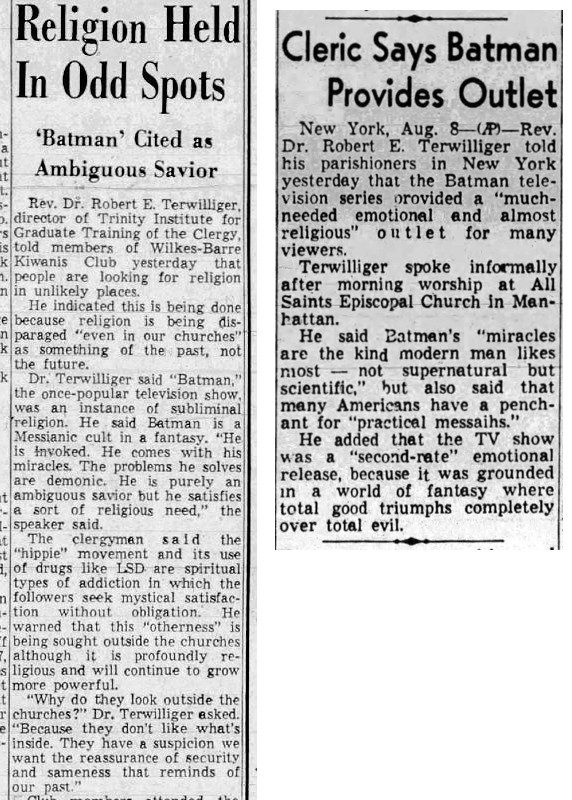
(L) Wilkes-Barre Times Leader - Apr 5, 1968; (R) R: Wilkes-Barre Times Leader - Aug 8, 1966
Posted By: Alex - Sat Dec 22, 2018 -
Comments (2)
Category: Religion, Comics
The Chicken Test of Heresy
The first people ever executed as heretics in Germany, back in 1051, were apparently identified as such because of their refusal to kill a chicken. More info from Graeme MacQueen of McMaster University:"were finally condemned when one of the bishops, more zealous in his presentation of the case than mindful of the dignity of his rank, presented them with a live chicken and ordered them to wring its neck. They refused to kill the bird, and were deemed beyond hope of redemption. Ignoring the arguments and threats of the assembly, they refused to recant and were hanged upon a gibbet."
The execution of these heretics, as near as can be determined by modern scholars, was ordered because it was felt that "their attitude implied a dualist-type belief in the transmigration of souls through the animal kingdom" and suggested that they were Manichaeans. The events at Goslar — and this group was not alone among persecuted Christian groups in the eleventh century C.E. in its refusal to kill animals — are often treated by scholars as an important step toward the twelfth century full-blown assault on heresy by the Church linked to the newly proclaimed death penalty for heresy.
Posted By: Alex - Sat Dec 08, 2018 -
Comments (2)
Category: Animals, Religion
Here We Go Round the Mulberry Bush
Nothing like a "church rave."
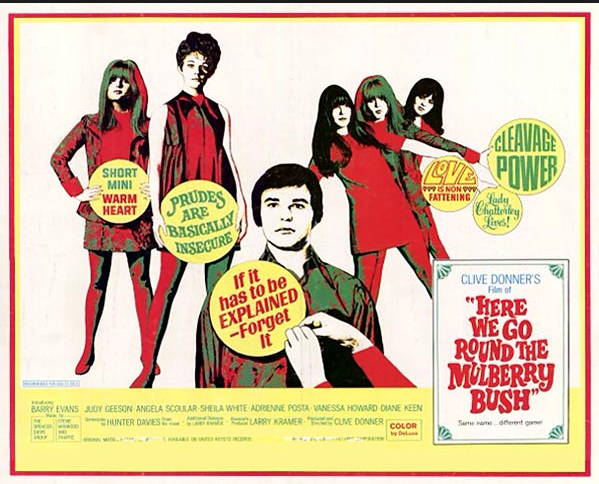
Wikipedia entry here.
Posted By: Paul - Sun Dec 02, 2018 -
Comments (1)
Category: Movies, Religion, Bohemians, Beatniks, Hippies and Slackers, Psychedelic, 1960s
Tunies, the tuna hot dog
The creation of William Lane, who envisioned selling them to Catholics who couldn't eat meat on Fridays. Lane also planned to expand his offerings to include Mar-tunies, a cocktail size hot dog, and Sea-lomi, a salami substitute.It's not clear what became of Tunies. A reporter from Star News speculates that they may have been a victim of the Pope’s decision to rescind meatless Fridays in 1967 (although did the Pope ever weigh in on this issue? Some googling suggests it was actually the U.S. Conference of Catholic Bishops which made this decision, in 1966). Anyway, I can't find any evidence of Tunies being sold after 1962.
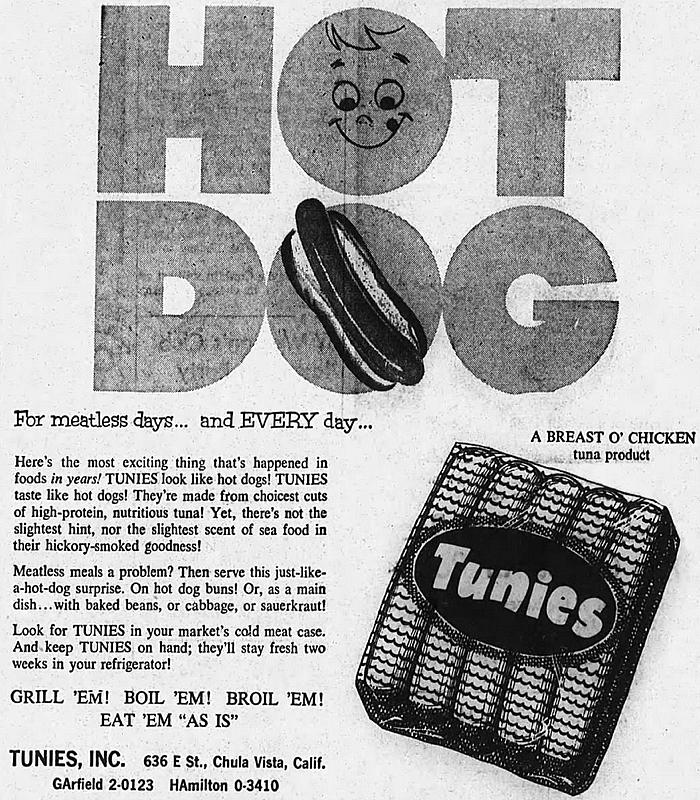
Chula Vista Star-News, California, October 31, 1957 via Yesterday's Print

The San Francisco Examiner - Dec 4, 1958
Posted By: Alex - Wed Nov 07, 2018 -
Comments (8)
Category: Food, Religion, 1950s
The Heaven Pacers Hot Rod Club
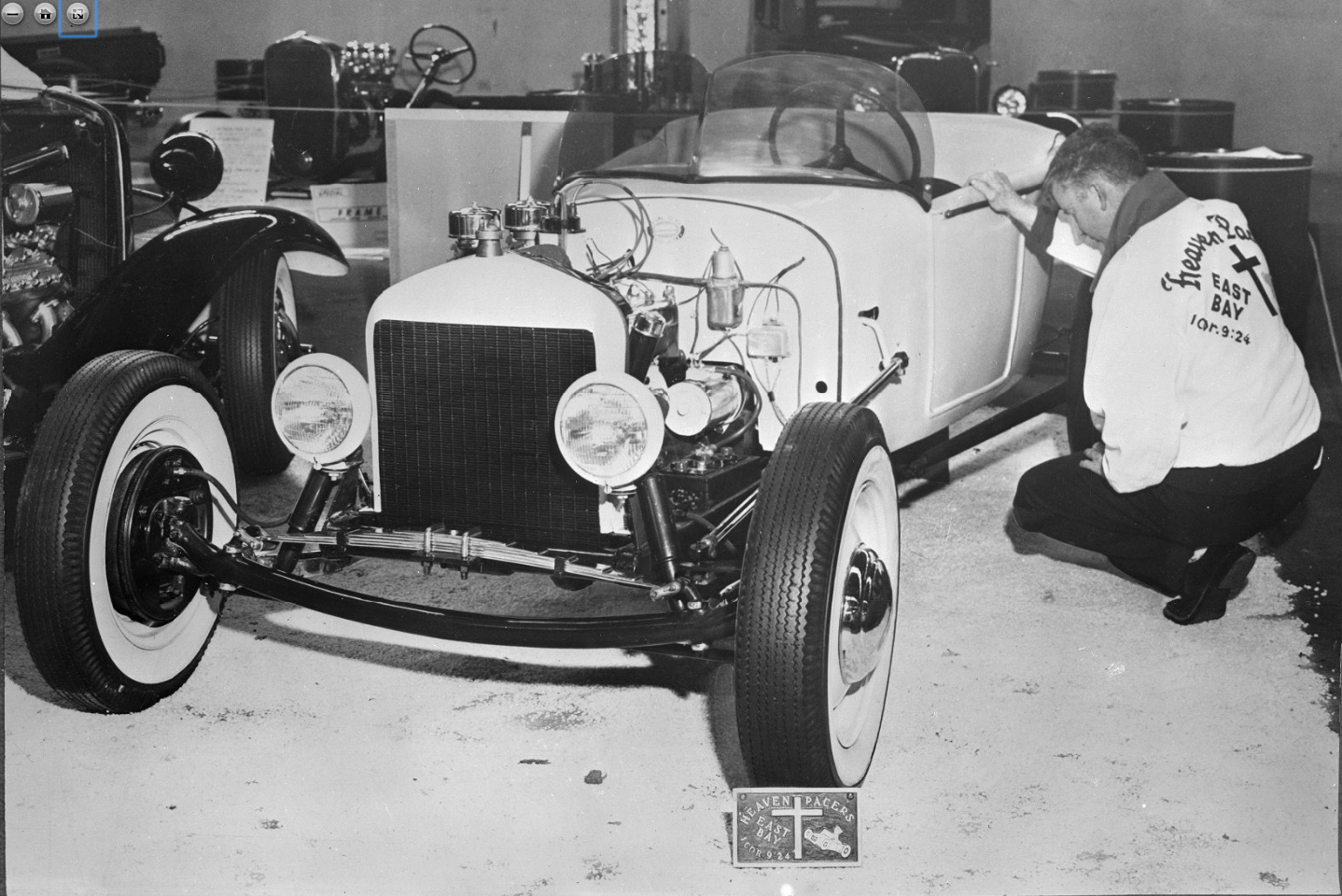
Oakland, Calif.--A "Hot Rod" racing club here is believed to be the only organization of its kind in the country which combines auto racing with the practice of Christianity. Known as the Heaven Pacers of the East Bay, the club's 20 active members consider their racing fraternity as a missionary field. Members attend a brief non-denominational service before every race that is held on Sundays, in addition to praying individually during a race. Here. Don Marker, past president of the club, kneels in prayer before his "hot rod." The Heaven Pacers have as their motto this verse from I Corinthians: "Know ye not that they which run in the race run all, but one receiveth the prize? So run that ye may obtain." (9:24) To join the club, applicants must "know the lord as your own personal saviour," and own or be able to build a "hot rod."
Source.
Posted By: Paul - Thu Sep 27, 2018 -
Comments (1)
Category: Motor Vehicles, Religion, 1950s
Shrine for the repose of the souls of people killed by Toyota cars
Built in 1970 at a cost of $445,000 (which, I'm sure, is a lot more in today's money). It was located in the Japanese mountain resort of Tateshina. I assume it's still there, though I haven't been able to find any recent references to it online.

Murfreesboro Daily News-Journal - Aug 3, 1970
Update: A more recent photo of it, via Tripadvisor. It's called the Tateshinayamashoko-ji Temple.

Posted By: Alex - Wed Aug 15, 2018 -
Comments (12)
Category: Death, Religion, 1970s, Cars
The Monk Calf of Freiberg
I don't recall any of this being discussed in October 2017 on the 500th anniversary of the Reformation.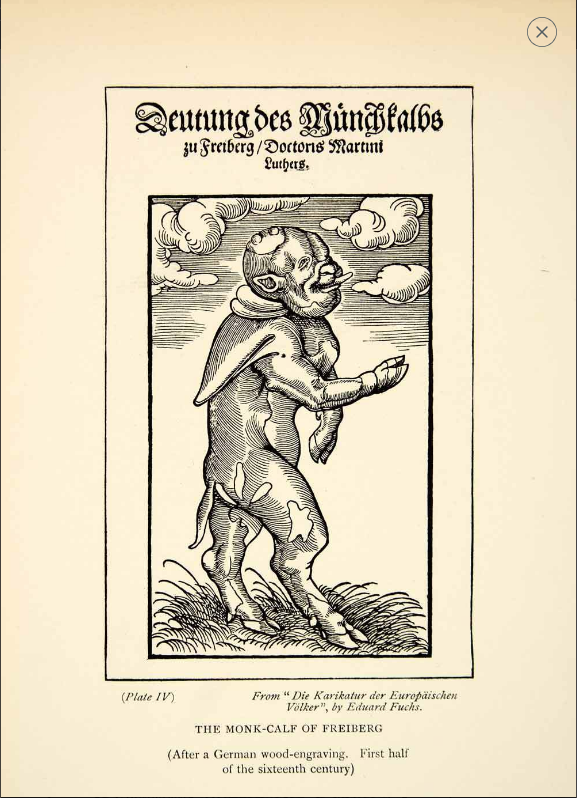
A misshapen calf, born in Freiberg, Saxony, on 8 December 1522, quickly became important in the German Reformation. It was born with oddly shaped legs (its hind legs straight as a human's) and with a fold of skin over its head shaped like a cowl—hence its comparison to a monk. An illustration made its way to a Prague astrologer, who "discovered that the monster did indeed signify something terrible, indeed the most awful thing possible--Martin Luther."[10] Luther himself responded quickly with a pamphlet containing a mock exegesis of the creature, Monk Calf, in which the "Monk Calf" stands, in all its monstrosity, for the Catholic church.[12] Luther's anti-papist pamphlet appeared together with a tract by Philipp Melanchthon[13] which discussed a fictional monster, the Pope-Ass, a hybrid between a man and a donkey supposedly found near Rome after the 1496 flood.[14] Circulated in 1523, Martin Luther and Philipp Melanchthon's pamphlet was titled The Meaning of Two Horrific Figures, the Papal Ass at Rome and the Monk Calf Found at Freyberg in Meissen.[15] Luca Cranach the Elder and his workshop provided the illustrations of the Papal Ass and the Monk Calf for the pamphlet. Variations of Luther and Melanchthon’s pamphlet eventually were circulated, including one that depicted the Papal Ass and the Monk Calf in “an encounter between the two creatures. This opening page adds a new phrase to the title of the book: ‘with signs of the Day of Judgement.'"[16]
Source.
Posted By: Paul - Tue Jul 31, 2018 -
Comments (1)
Category: Anniversary, Religion, Europe, Sixteenth Century, Fictional Monsters
Baby Jesus Doll
A legendary flop in the toy industry. It was brought out in 1958 by the Ideal Toy Company, which was the same company that invented the teddy bear in 1903 and introduced the Rubik's Cube in the 1980s.The story goes that the company president, Ben Michtom, got the idea for it after visiting the Pope. From the NY Post:
“What a bomb,” exclaimed [Paula] Michtom. “Being Jewish, [the family] didn’t understand that no one was going to buy the toy. No one was going to have their children playing with the Christ child.”
Even the kids in the ad for it look pretty disinterested in the thing.


Posted By: Alex - Fri Jul 13, 2018 -
Comments (4)
Category: Religion, Toys, 1950s

| Who We Are |
|---|
| Alex Boese Alex is the creator and curator of the Museum of Hoaxes. He's also the author of various weird, non-fiction, science-themed books such as Elephants on Acid and Psychedelic Apes. Paul Di Filippo Paul has been paid to put weird ideas into fictional form for over thirty years, in his career as a noted science fiction writer. He has recently begun blogging on many curious topics with three fellow writers at The Inferior 4+1. Contact Us |




